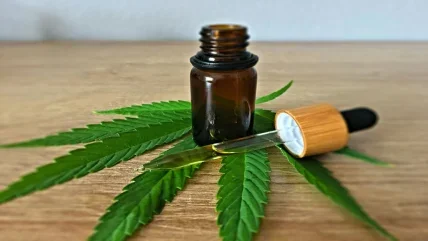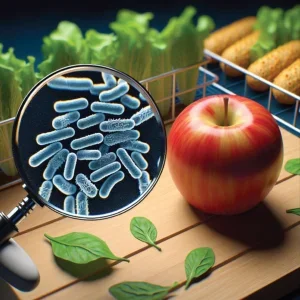
On 1 July 2018, President Justin Trudeau plans to end Canada's prohibition on recreational marijuana (the first G7 country to do so), which is predicted to also drive rapid local expansion of the hemp and cannabidiol (CBD) market. If Europe is to participate in the growth of this industry – and partake of the multiple benefits it has to offer – it needs to act now.
The industry body representing hemp growers, manufactures and processors across Europe is known as the European Industrial Hemp Association (EIHA). Recently, it called for the presence of low levels – up to 20mg a day – of CBD to be permitted in foods and beverages without any restriction across all EU members states. This would remove a major barrier to the development of this important new industry.
The importance of hemp
Hemp is a variety of the Cannabis sativa species that is cultivated specifically for the industrial uses of its derived products. It grows at a high rate, and was first spun into usable fibre 10,000 years ago.
Hemp can be refined into a vast and diverse range of commercial products including paper, textiles, clothing, biodegradable plastics, paint, insulation, food and animal feed. Bio-based materials, including hemp, can be used to construct ‘zero-carbon’ buildings, where the materials have absorbed more CO2 than is consumed during construction.
Even the production of hemp is carbon negative, meaning it absorbs more carbon from the atmosphere during its growth than the equipment used to harvest, process and transport it emits.
As a food ingredient, hemp seed is rich in essential nutrients such as chlorophyll, magnesium, potassium, and sulphur. The omega-6 to omega-3 EFA ratio in hempseed oil is normally between 2:1 and 3:1, which is considered to be optimal for human health. The seed is 33% protein – a startlingly high level, particularly when compared with popular sources of animal protein (Table 1 below).
The perks of the plant
CBD is the most abundant cannabinoid found in industrial hemp. It is non-psychotropic and non-intoxicating, and is present at a concentration of between 0.5–4.0% in the upper third of the plant.
While the current focus appears to be on CBD’s extremely promising medicinal applications, the broader conversation should also consider how the consumption of small amounts of cannabinoids can help to maintain a good state of general health and wellbeing, and is therefore relevant to all. It is also important to note that CBD has no relevant side effects – even when it is consumed at high doses.
With consistent regulation in place, all could have equal access to a range of CBD-enriched foods, beverages and supplements, produced at a high level of quality and available in multiple channels, including health stores and general grocery chains. If CBDs became a part of everyone’s diet, the physical and mental health benefits could perhaps be greater than any other botanical.
In order to appreciate the benefits of CBD, one must understand the body’s endocannabinoid system (ECS). The ECS is closely involved in the regulation of many key functions encompassing the nervous, digestive, reproductive, immunological and endocrine systems, such as appetite, mood and sleep. It is comprised of endocannabinoids and cannabinoid receptors, and is located throughout the body, with its overall purpose being to regulate homeostasis; maintaining balance and well being. The consumption of phytocannabinoids provides important additional nutrients to maintain and support the ECS.
Regulatory problems
However, the entire hemp debate originates from the fact that industrial hemp shares a common genus – Cannabis – with marijuana; its high- THC relation. This commonality has created a major legislative barrier to the development of the industry. In particular, the implication of the 1961 UN Convention on Narcotics means that decisions made in the context of the 1960s continue to have a profound effect 56 years later.
During the 1961 conference, cannabis was designated a controlled drug, and it was specified that a ‘cannabis plant’ means any plant of the genus Cannabis – including industrial hemp and marijuana.
Cannabis means the flowering or fruiting tops of the cannabis plant (excluding the seeds and leaves when not accompanied by the tops) from which the resin has not been extracted, by whatever name they may be designated.
This effectively prohibits the processing of the entire hemp plant, which prevents its optimal use. This waste of valuable material increases production costs and leads to higher consumer prices, reducing the overall cash value of the crop and making some CBD-based applications uneconomic to produce.
CBD in Europe
Currently, there is only a tenuous patchwork of CBD-regulations in the EU. EIHA supports the development of harmonised legislation in this field to attract investment and to facilitate research and development and drive new product development. It is also strictly opposed to the attempts made by a few pharmaceutical companies to make CBD a prescription-only drug.
This serves the interest of but a few companies while damaging the developing CBD industry and restricting access for the majority of citizens across Europe.
There are a number of extremely exciting applications for CBD across many markets, but particularly in the retail and food service sectors. It could be incorporated into a wide variety of products including sports nutrition, beverages, enriched water, tea, beer, wine, dairy alternatives, snacks and confectionery, to name but a few.
Despite being shrouded in negative association, this cannabinoid has much to offer – and perhaps as accessibility increases, we will all experience the benefits first-hand.






